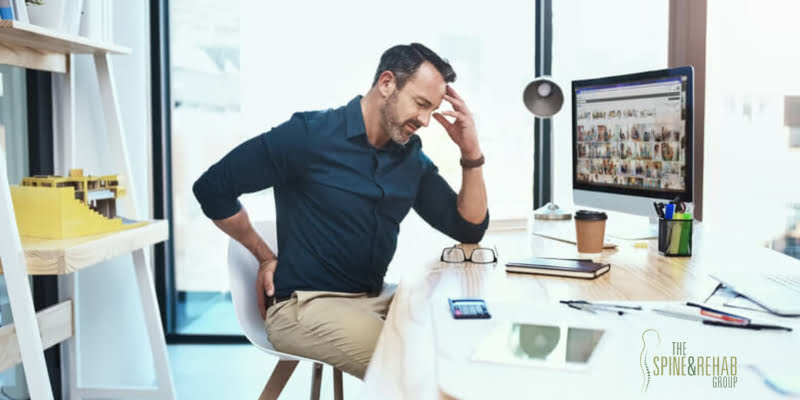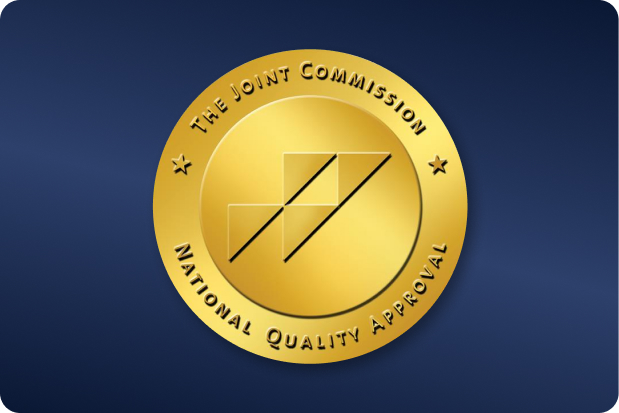 OUR LOCATIONS
Call to book 201.523.9590
OUR LOCATIONS
Call to book 201.523.9590
 OUR LOCATIONS
Call to book 201.523.9590
OUR LOCATIONS
Call to book 201.523.9590


The spine is the body’s central support structure for the body, giving it much-needed flexibility while remaining relatively rigid to support our weight. By design, the spine is supposed to move around freely, since the vertebrae that make up the spinal column should not rub together. However, certain lifestyle habits like sitting around all day can cause significant changes to your spine, which can quickly escalate to acute or chronic pain.
But why does sitting around all day cause back pain? It’s because the posture of your spine is reliant on constant flexibility and movement to keep itself pliable. Sitting down for long periods of time can cause the discs in your vertebrae to lose their cushioning, which causes back pain.
The human body is naturally built to stand upright. It helps the bones maintain more strength, exercises the muscles that hold them together, and allow better blood circulation. Sitting down for a long period disrupts this process, pushing your body out of alignment and affecting your overall health.
Depending on your body weight, this added pressure on your vertebra and back muscles can cause severe and chronic back pain. Because people are more likely to live a sedentary lifestyle today, it’s even more crucial that they are properly informed about the risks of sitting down for too long.
Some complications that may arise from sitting down for long periods of time are:
Sitting in one position for a long period locks your body in place, which makes it more difficult for you to move when you stand up. When you experience that stiff or slightly burning sensation when you stand up, that’s your body trying to recover from the unnatural position that you’ve locked it in. Most of the time, this can lead to a pronounced slouch forming in your upper body.
Developing poor posture can lead to serious issues like kyphosis, joint problems, and improper circulation. While corrective sitting and physical therapy can help with this problem, early detection is often the best way to prevent poor posture when sitting down.
Sitting for long periods can cause extensive pressure on the back of your body, causing it to contract and compress on itself. This can lead to pinched nerves, which can trigger symptoms like neck pain, back pain, sciatic nerve pain, and other acute trigger points within your nerve clusters.
Left untreated, pinched nerves can progress from acute pain to permanent nerve damage because of the consistent strain on your nerves. This can also lead to a total loss of sensation in the limbs, general numbness, or weakness in the arms and legs.
The muscles in your lower body need consistent exercise and movement to keep their mass and ability to support your weight. Sitting for long periods can lead to muscular atrophy, where muscle groups like your glutes and leg muscles become unable to support their own weight.
Sitting causes your hip flexor muscles to contract, which can increase your risk of developing hip-related disorders. Because of the poor blood circulation, the muscles in your lower back don’t receive nutrients or expel their waste compounds. This can also lead to acute and chronic back pain if left untreated.
Moving around is one of the body’s best ways to burn calories. If you sit down all day, your digestive system stops running efficiently, which leads to increased weight gain. This weight gain usually pools around the thoracic and lumbar regions, where they can interfere with the normal function of many important organs by applying enough pressure.
All the added weight also puts you at an increased risk of metabolic syndrome, which increases your likelihood of developing heart disease, diabetes, or stroke. Because of the additional strain placed on your cardiovascular system when you sit down, you can develop serious life-threatening complications like kidney disease.
While the complications of sitting down all day can be very serious, patients can often treat or manage some symptoms at home. With enough forewarning, advice from a doctor, and active attention to their daily routine, it’s possible to reduce or ease back pain associated with sitting down.
Here are some adjustments that you can make to your lifestyle to prevent back pain:
In most cases, sitting down for an extended period is unavoidable. In these situations, choosing an ergonomically friend chair – preferably one with lumbar support – can help diminish the risks of developing back pain. It’s also crucial to buy a desk that can work with your setup, and relieve some of the pressure you normally experience when sitting down.
Keep in mind that simply buying an ergonomic chair isn’t enough: you need to make the necessary adjustments to fit your entire setup. You can consult an online guide about how to set up an ergonomic chair (there are plenty of official resources online you can use) though consulting your doctor is still the best option.
The proper way to sit down is with your back straight, shoulders back, and your buttocks touching the back of your chair. The aim of this sitting position is to replicate the natural curvature of the spine when the body is at rest, keeping your neck straight and your feet elevated.
Proper sitting posture is crucial if you work in a setup that requires you to sit for long periods, since it’s the posture that can help maintain the natural structure and support of the spine. It also puts less strain on the vertebrae and reduces the likelihood of suffering from slipped discs.
If you go straight to sleep after sitting down all day, your body’s natural tendency is to replicate the same posture you had while you were in your chair. This is bad for two reasons: it prevents your body from stretching after being stuck in one position for so long, and it decreases the quality of sleep that you get.
Adjusting your sleeping position by adding more pillows, adjusting your mattress, or getting a weighted blanket can help manage the back pain from sitting down all day. It also helps your body recover faster from staying still for so long and allows it to regain the natural curvature of the spine.
One of the best ways to prevent any back pain or complications from sitting down is to limit the time that you spend in your chair. You can get up, go for a walk, move around the house, or lie down. The crucial thing to remember here is to avoid locking your body in one position for a long period.
Doctors may also recommend exercise and physical therapy for particularly severe cases of back pain, though they may also give you exercises that you can follow at home after your therapy sessions. It’s important to be thorough and consistent with these exercises to restore the natural structure and support of your back.
Back pain from sitting all day can be an early indicator of more severe complications and needs to be diagnosed immediately. While home remedies and exercises can help with pain management, these are preventive and palliative options that may not adequately address the cause of the pain. In cases of severe or persistent back pain caused by sitting all day, consultation with a medical professional is still the best option.
At The Spine And Rehab Group, we have extensive experience and familiarity with the different factors that can cause back pain. We pride ourselves on working with patients as a partner to improve their spinal health, treating their problems with efficiency and high-quality customer service. As a leading healthcare specialist in New York, our clinics are fitted with the latest innovations and knowledge needed to help you with your back problem. Contact us today to set up your consultation.



